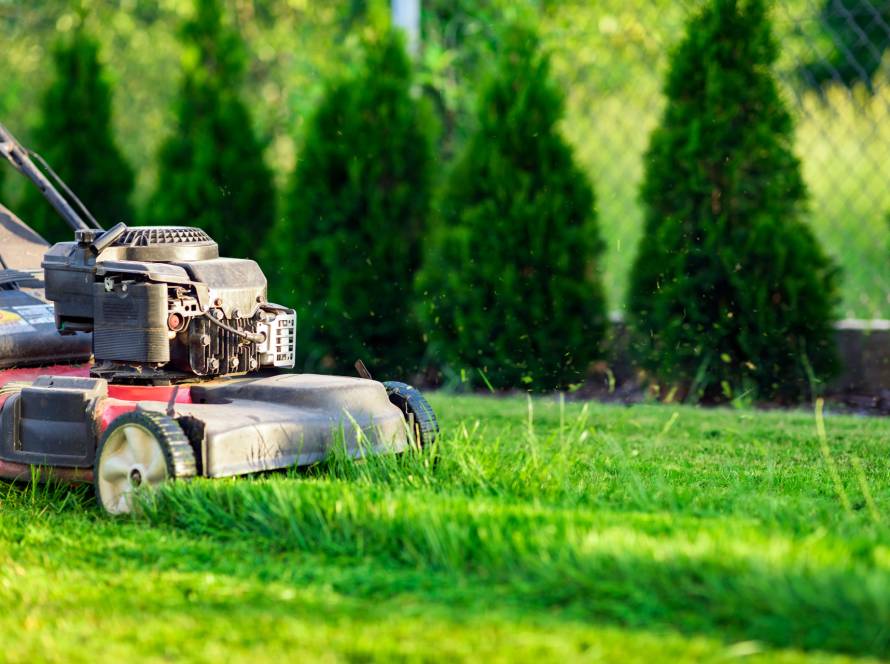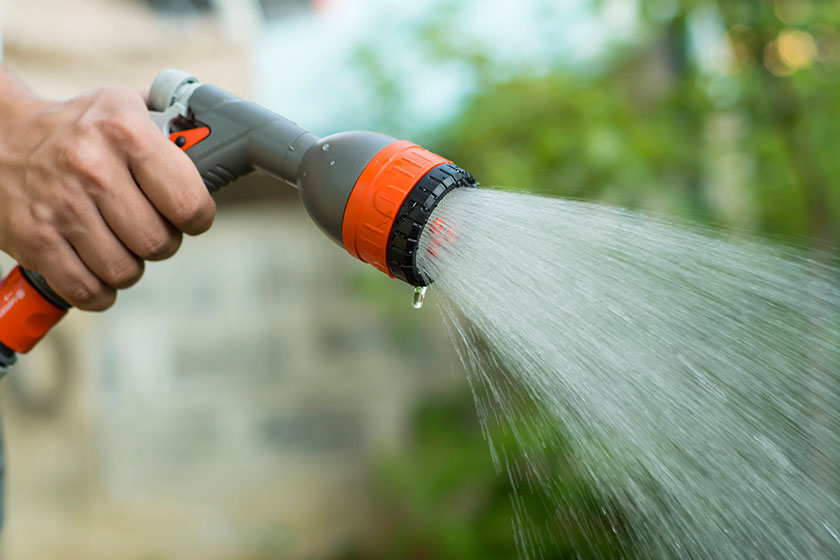Maintaining a lush, healthy lawn goes beyond regular mowing and watering, it requires understanding the deeper needs of your grass, particularly the importance of aeration. At Covenant Landscapes, we specialize in full-service lawn care, including crucial aeration services that help your lawn breathe and grow. In this guide, we will explore the best times to perform lawn aeration, making sure your grass receives the best possible care throughout the year.
Understanding Lawn Aeration
What is Lawn Aeration?
Lawn aeration is the process of creating small holes in the soil to facilitate the movement of air, water, and nutrients down to the grassroots. The technique encourages roots to grow deeper and stronger, leading to a more resilient and lush lawn.
The primary purpose of aerating is to address soil compaction, a condition where soil particles are pressed closely together, restricting the flow of essential elements such as air, water, and nutrients. Alleviating this compaction, aeration helps restore healthy soil conditions, promoting better root development and overall lawn vitality.
Why Aerate Your Lawn?
Aeration can benefit your lawn significantly by:
- Enhancing soil water uptake.
- Improving fertilizer uptake and use.
- Reducing water runoff and puddling.
- Strengthening turfgrass roots.
- Reducing soil compaction.
- Enhancing heat and drought stress tolerance.
When to Aerate Your Lawn
The timing of lawn aeration is critical and should be aligned with your grass type’s natural growth cycles. Aeration is best performed during a lawn’s peak growing period when the grass can heal and fill in any open areas after soil plugs are removed. Here is how to determine the best aeration schedule for different types of grass:
Cool-Season Grasses
For cool-season grasses such as Kentucky bluegrass, fescue, and ryegrass, early fall or early spring are ideal times for aeration. Aerating in early fall allows the grass to heal before it goes dormant in winter, and the cooler temperatures are beneficial for grass recovery. Spring aeration should be done early enough to take advantage of the active growth period but late enough to avoid the wet soil conditions that can complicate the aeration process.
Warm-Season Grasses
Warm-season grasses like Bermuda, Zoysia, and St. Augustine grass benefit most from aeration when performed in late spring or early summer. The timing ensures that the grass is actively growing and can quickly fill in the areas disturbed by aeration, thereby maximizing the benefits of the process.
Special Considerations
- Soil Type: Lawns with heavy clay soils compact more easily and may require more frequent aeration.
- Usage: High-traffic areas such as playgrounds and paths may need aeration more frequently due to the increased compaction from foot traffic.
Assessing Your Lawn’s Aeration Needs
Before deciding to aerate, assess your lawn’s condition. Signs that your lawn needs aeration include:
- Water puddles on the surface after rain.
- Hard soil that resists penetration, even when moist.
- Thinning grass or bare patches that do not seem to recover.
A simple way to test whether your lawn needs aeration is the screwdriver test. On a day when the soil is moist but not soaked, try inserting a screwdriver into the ground. If it goes in with little resistance, your lawn is likely not compacted; if it is difficult to push in, aeration may be necessary.
Choosing and Using the Right Aeration Tool
Selecting the appropriate aeration tool is pivotal for achieving a successful lawn aeration. Different tools are designed for varying needs and soil types, and understanding their functions can help you make the best choice.
Spike Aerators are commonly used tools that work by driving spikes into the soil to create holes. These tools are relatively easy to use and cause minimal disruption to the surface. However, they might not be ideal for addressing deep soil compaction. Spike aerators can sometimes increase soil density around the puncture sites, which may not effectively relieve more severe compaction issues.
On the other hand, Slicing Aerators employ rotating blades to cut through the grass and soil, creating slits. This method is beneficial as it enhances the absorption of water and nutrients without adding further compaction. Slicing aerators can be particularly effective in improving soil aeration and facilitating better root growth, especially in cases where surface compaction is a concern but deeper layers are relatively unaffected.
For those dealing with substantial soil compaction, Core or Plug Aerators are typically the most effective. These aerators remove small cores of soil from your lawn, leaving the plugs on the surface where they gradually decompose. This type of aeration brings ample space for air, water, and nutrients to reach the root system, making it especially useful for heavy or clay soils.
How to Aerate Your Lawn Effectively
After choosing the right tool, the next step is to execute the aeration process effectively. Begin with preparing your lawn: mow it to a slightly shorter height than usual to allow the aerator to penetrate the soil more easily. Watering the lawn thoroughly one to two days before aeration is also needed. Moist soil facilitates better aeration and reduces the effort required from your equipment.
When it comes to the actual aeration process, small to medium-sized lawns might benefit from a manual push aerator. For larger areas, powered aerators are often more efficient. Start by aerating in one direction and then make a second pass perpendicular to the first. This crosshatch pattern ensures thorough coverage and reduces the likelihood of missing any areas. Post-aeration care is equally important. Immediately after aerating, take advantage of the newly created soil channels by applying seed, fertilizer, and additional water.
Enhancing Lawn Recovery Post-Aeration
Once you have completed the aeration, proper follow-up care can significantly impact your lawn’s recovery and growth. Continue to water your lawn regularly to encourage deep root growth. The holes created during aeration allow moisture to reach deeper soil layers, which is essential for maintaining a robust root system.
Aeration also presents an excellent opportunity for overseeding. Spreading grass seed after aeration takes advantage of the exposed soil for better seed-to-soil contact. It can help fill in bare patches and enhance the density of your lawn, leading to a thicker, more vibrant turf.
Applying a balanced fertilizer post-aeration provides essential nutrients that help your lawn recover from the stress of the aeration process. This step supports new growth and contributes to a lush, healthy lawn. Regularly monitor your lawn’s progress in the weeks following aeration, looking for signs of improvement such as increased density and a richer color. If issues persist, it may indicate other underlying problems that require attention.
Aeration is a crucial component of maintaining a healthy lawn and ensuring its long-term vitality. Choosing the right tools, following effective techniques, and giving proper care, you can transform a struggling lawn into a thriving landscape. For comprehensive care, consider integrating these elements into your routine maintenance schedule.



